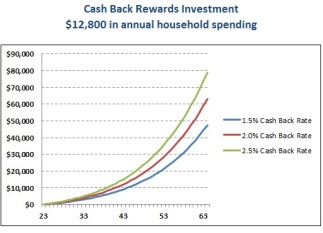Congratulations! You’ve got a job, paid down your student loans and credit cards, and have a little money leftover each month. You know you should invest this money for retirement, but you aren’t sure exactly where to start. This guide should help you out.
Does your company offer a 401(K) Plan and match?
If so, let’s start here. If not, skip to the next section. Most employers offer a 401(K) plan, and most employers offer matching contributions (something like $0.50 per dollar you contribute, up to 6% of your salary). 401(K) plans are employer sponsored retirement plans which allow your savings to grow tax deferred (that is, you pay income tax on your withdrawals in retirement; however, you do not have to pay tax on dividends or capital gains). Employer matches are basically free money, so I would highly recommend contributing up to the employer match into your 401(K) plan. You can begin taking money out of your 401(K) without penalty at age 59 and a half.
As the investment options for 401(K) plans differ from employer to employer, I cannot give much advice as to how exactly to invest your money. I will say, look for funds with low fees (Vanguard) and high equity allocations. Equities are riskier, but will almost certainly perform better over the long run. Plus, you are young, and have plenty of time to tolerate swings in your retirement portfolio. The maximum contribution to a 401(K) in 2015 is $18,000, but once you hit your employer match I would recommend moving on to a Roth IRA. This is because you can’t access money in your 401(K) if you want to buy a house or a car, for example, without paying a 10% penalty.
Open a Roth IRA
If you are contributing enough to receive the full match on your 401(K) plan, the next step should be to open a Roth IRA. I recommend using a service like Betterment or WealthFront. These services provide you with a low cost, well-diversified portfolio and often offer additional services such as rebalancing and tax-loss harvesting which serve to boost returns.
With a Roth IRA, you pay regular income tax now and then never have to pay a dime of tax again. A Roth also has some additional benefits. You can take out the contributions you make to a Roth at any time with no penalty (you can’t take out any earnings your investments have made without a 10% penalty, however, but I will come back to this later). So if you want to purchase a house, you are free to take out the money you have contributed to your Roth. Just like a 401(K), you can begin taking distributions from your Roth IRA at age 59 and a half.
The contribution limit for a Roth IRA is $5,500 for 2015. You can tap into up to $10,000 the earnings of your Roth IRA without penalty if your account has been open for five years and it is for a qualified purchase, such as a home.
The Next Step
If you still have money left over after reaching your employer match on your 401(K), and hitting the contribution limit of $5,500 on your Roth IRA, then congratulations, you are doing much better financially than most millennials.
At this point you need to consider your goals. Do you:
1) Have a specific purchase in mind, such as a home?
If you have a large purchase on the horizon, such as a home, I would recommend opening a taxable account, again with a service such as Betterment or WealthFront. While taxable accounts don’t offer the same tax benefits as IRAs and 401(K)s, they do give you the flexibility to take out money as you please.
2) Want to save as much as possible for retirement.
If your goal is simply to maximize retirement savings, you should continue to contribute to your 401(K), up to the $18,000 contribution limit due to the tax benefits that a 401(K) provides. Once you hit this limit, your only choice is to open a taxable account.
I hope this column gives 20 something’s a good idea of which accounts to use in investing. If you are reading this column, then you are getting a good start on your way to a long and happy retirement!




